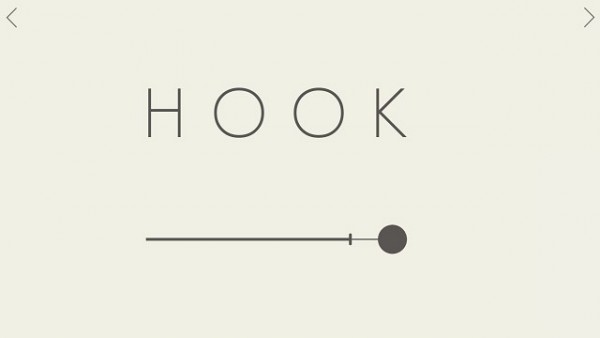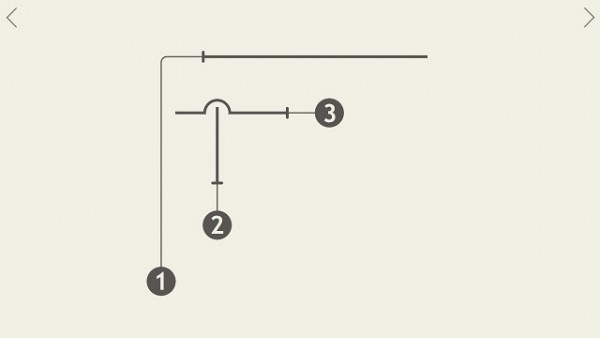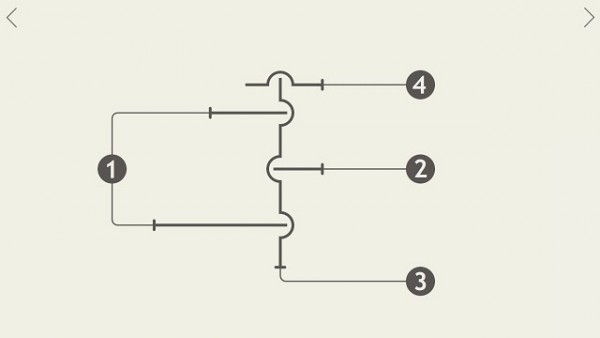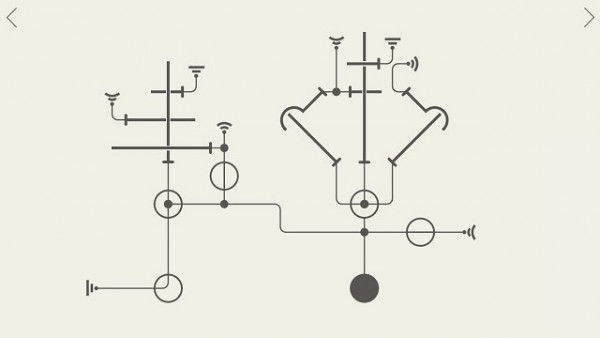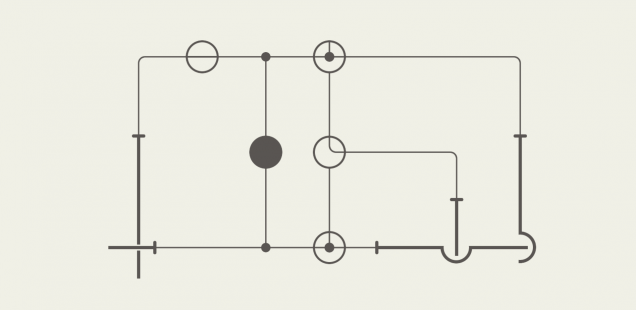
Due Diligence: Learning the Ropes with Hook
Leigh Harrison takes you to school.
A long time ago, games used to come with something called a manual. These were thick books filled with pretty pictures and lovingly-crafted prose that taught you how to play. Depending on the type of game, you could end up with tech trees, strategy tips, walkthroughs of early levels, or useful maps. Metal Gear Solid 2 even came with an instructional manga, a comic that acquainted players with its controls, concepts, and strategies. Printed materials like these were instrumental in teaching players the skills necessary to play.
Then, one day, games stopped coming with manuals. Today, the first ten minutes of most games is given over to telling the player what to do. This often boils down to transplanting the words that used to live in manuals into the game itself, be it through on-screen text or instructional dialogue. The problem is that the clumsy conversion of these materials can often create a disjointed, stop/start flow as a game struggles to pass on knowledge as quickly as possible.
Blood Dragon, a tongue-in-cheek add-on for Far Cry 3, attempts to sarcastically address the laziness inherent in this approach by filling its tutorial with all sorts of instructional junk, outright pausing every few seconds to tell you something new. The game drops the player onto an island full of laser guns, dinosaurs, and bad guys — videogame conceits if ever I saw them — and forces them to endure an achingly self-aware step-by-step guide to playing. “Look up, look down; to the left, now to the right,” your handler instructs as our protagonist quips lyrically about how unnecessary this rigmarole is. The joke might work its way to a respectable conclusion if it stopped there with the punchline “enough is enough; just go ride a dinosaur,” but it doesn’t. Instead the tutorial goes on, teaching you how to crouch, run, and throw rocks at waterfalls. This is all amid a chorus of increasingly disenchanted and theoretically laughter-inducing grumbles from our hero. I’d hazard that most people are too busy sighing in resignation by its end to fully embrace the hilarity.
Granted, a compelling tutorial is hard to make, but you can’t take the sting out of learning by simply poking fun at its necessity. Games can be nigh-on impenetrable to newcomers and so must be at least a little accommodating. Teaching players the skills they need to play, however simple they may be, is never optional. The real question is not how to make the process less of a pain, or even how to cover up its shortcomings, as in Blood Dragon. It is how to improve the transfer of vital knowledge from developer to player— how to make the tutorial better.
Maciej Targoni’s Hook offers a compelling vision of how this can be accomplished. Hook is a puzzle game for iOS, Android, and Windows Phone that is all about untangling wires. The game begins silently teaching the player right from the title screen (above) by presenting the simplest unit of its design: a single wire and a switch. I say “silently” because, apart from the title of the game, there is no text or other instructions. Hook simply gives the player something to interact with and trusts their curiosity to do the rest.
If you press the circular switch, the wire retracts towards it, making a delightfully bouncy ratcheting sound as it goes. The components then fade out and disappear, and the player is congratulated with a victory chime acknowledging their achievement. Through this simple, wordless experiment the player has been taught the game’s most essential piece of information without any explicit instructions. The next couple of puzzles acclimatize the player to having more objects present on the screen. Two and then four switch and wire combinations are given to us. At this juncture there is no puzzle element; we’re just getting warmed up to Hook’s mechanical and visual language. These levels also present the minimalist beauty of the game’s art style, suggestive of designer circuit diagrams.
The combination of visual simplicity and audio feedback is what really makes these levels so good at teaching the basics of play. Hook is a mobile game, so players should have prior experience pressing icons on a touchscreen, making this an instinctive response when seeing the circular switch for the first time. In replicating this familiarity, the game smartly taps into an already widely understood vernacular rather than creating one anew. At the same time, the early stages of the game are careful to only reinforce positive actions, which allows them to clearly direct the player via the audiovisual cues. If, for instance, we attempt to drag the switch along the wire — another familiar touchscreen gesture — nothing happens. Only when the player completes the task as intended do things change, with progress signified via the wire shortening and disappearing and the DING chime, itself reminiscent of a phone’s notification tone. It’s a thoughtful design choice that allows the game’s audiovisual aesthetic to be both abstract and eminently readable.
Puzzle four (above; I’ve added the numbers for illustrative purposes) is the first time you are introduced to the systematic nature of the game’s challenges. Of the three wires present, wire one can be removed from the start, but the other two are interlinked. As with the previous stages, you’re free to assess the situation at your own pace and investigate the relationship between the two wires. Indeed, if you push switch three first, its wire begins to move and hits switch two’s; both get caught on one another with a satisfying visual vibration and an auditory THUNK. Here we experience the game’s negative cues for the first time. In being deliberately more unpleasant than their congratulatory counterparts, they convey their message in a satisfyingly jarring way, making you viscerally aware that your course of action was incorrect. In fact, failing this puzzle the first time is actually advisable, as it further acquaints the player with the game’s audiovisual language. Through another round of effortless experimentation you’ve taught yourself the game’s second core tenet. While these mechanics are simple, there’s a sense of achievement in working out their function. While Blood Dragon mocked the player as it taught them key concepts such as camera control, Hook respects the player by allowing them to play with its mechanics until they understand them intimately.
Puzzle seven (above) introduces the concept of one switch controlling multiple wires. Here we see the difficulty begin to intensify, though only slightly. The virtues of embracing patience and diligence are reinforced as the wires begin to interact with each other in more complex ways. Switches one and two can be pushed in any order because none of the wires attached to them are blocked by the others. Both switches must be pushed before three, as they hinder the movement of its wire. That wire in turn needs to be be retracted before the final switch, four, can be hit to complete the puzzle. It’s still all very simple, but this gentle difficulty curve is the perfect means of introducing and then intensifying the mechanical challenges the player faces. In creating a natural progression from one level to the next, the game smartly avoids the trite step-by-step nature of many tutorials. Each point of the learning journey is still there, but in presenting them as part of a much larger whole, they appear integral to the game’s overarching experience and are therefore much more meaningful to the player.
With these simple lessons learned, Hook takes off the training wheels and starts throwing complicated networks of switches and wires at the player.
This is puzzle seventeen. It looks significantly more complex than anything I’ve shown previously, but only because you’re missing the nine levels of contextualization that came before it. To a passerby this level looks like a complicated mess of beautiful but intimidating lines. However, if you’ve played up to this challenge, it looks wonderful. It promises the pleasure of applying what you’ve already learned to figure out how things fit together, the trepidation of pressing that first switch and hoping you know what you’re doing, and the satisfaction of retracting the final wire and feeling like you mastered it all by yourself. You were taught what to do of course, very methodically and deliberately. But this knowledge was handed to you so gently, so naturally, that it didn’t feel like being taught at all. The game never pauses, as Blood Dragon and countless others do, to directly teach you something and then ask if you’re keeping up; it just gently increases the challenge to make sure you are. Because of this, its flow is never impeded, and so the player learns cumulatively, rather than each level being a discrete challenge to be conquered. In this way, the information sticks with the player, building up their understanding of and connection to the game’s mechanics.
After this, Hook introduces new mechanics, like junction boxes and wireless receivers. Both of these additions increase the game’s difficulty by further tangling up the route from input to output. The game’s later puzzles are carefully balanced chaos, complex mechanical webs comprised of interweaving lines and crisscrossing wires. A careless tap on the screen, an incorrectly aligned junction box, or an overlooked wireless connection can have the whole screen shaking at you in disdain, your phone’s speaker heckling you along with a chorus of dismissive THUNKs. But, as with everything in Hook, you’re more than equipped to master its challenges. You just need to remember what it has taught you.
In structuring itself as an ever-intensifying series of lessons, all conveying information through an implicit directive of experimentation, Hook makes for an exceptionally empowering experience. Rather than quickly pushing the player through a set of half-hearted lessons, the game silently guides you. It genuinely cares about how it teaches you, resulting in the player tangibly improving their abilities over its duration. Its stark and orderly visuals belie a game whose every inch has been lovingly assembled by human hands, every detail beautifully designed to nurture our understanding of them. In fact, it’s difficult to say that it ever really gets hard. Its learning curve is so perfectly contoured that even when you arrive at the game’s final levels, where you’re appraised on your comprehension of all the game’s mechanics simultaneously, it still doesn’t seem insurmountable. You already know what to do, because every challenge becomes a lesson learned once you move on to the next. Nothing is ever too intimidating; it is always just intimidating enough. This, in my mind, represents a triumph of tutorial design.
Blood Dragon is an extreme example, but lots of contemporary games, especially more action-oriented ones, tend to gear their tutorializing around a structure that can trace its lineage right back to pausing the game to look at a physical manual. Hook, in replicating the cumulative progression of learning seen across an academic semester, uncouples the process of teaching from its rigid and distracting roots. Everything the game teaches you is perpetually reinforced through an enriching suite of ever-intensifying challenges, teaching you to master the mechanics through natural, engaged interaction. In creating space to experiment, the game lets players fully appreciate how each element of its design works. This creates an atmosphere of genuine understanding and ownership over the skills learned, as opposed to the superficial mastery of clicking through button prompts and on-screen text. Through its graceful, intuitive design, Hook manages to coax the best out of you without you ever knowing it’s doing so.
Leigh Harrison lives in London, makes DVDs for a living and owns a hamster. He likes canals and rivers a great deal, and spends a lot of his time walking. He occasionally says things about videogames on the Internet, and other things on The Twitter.
